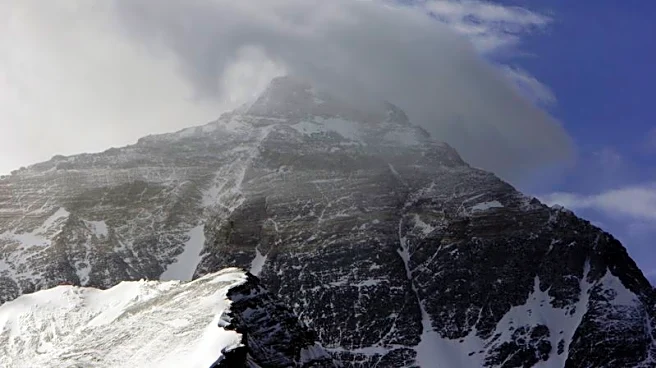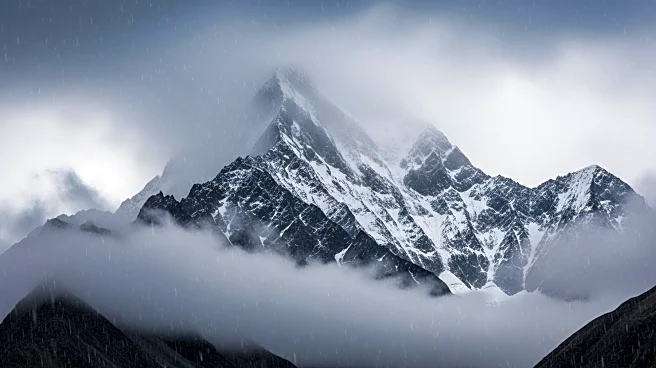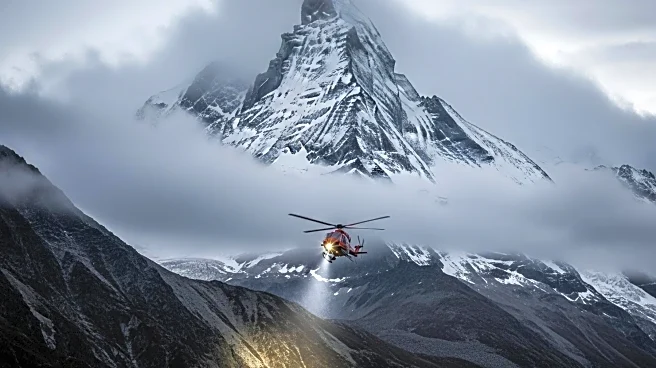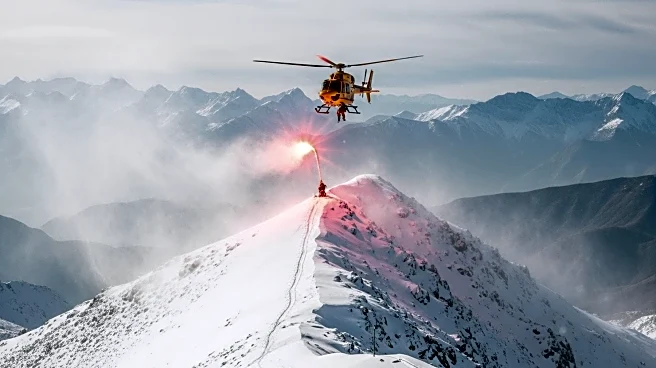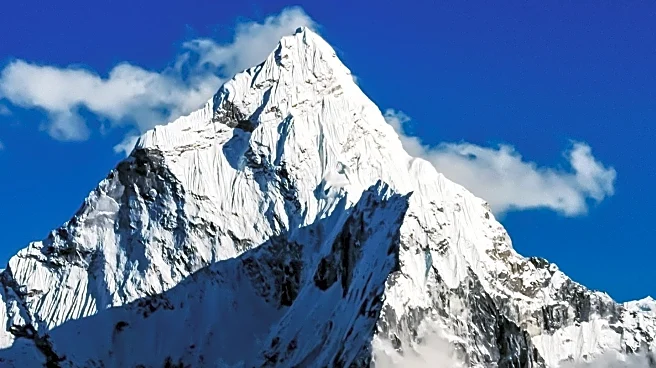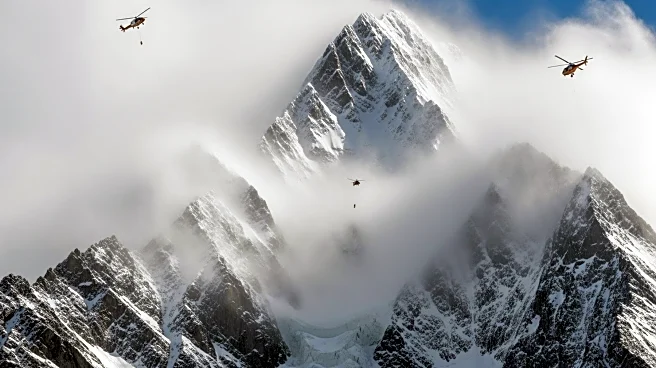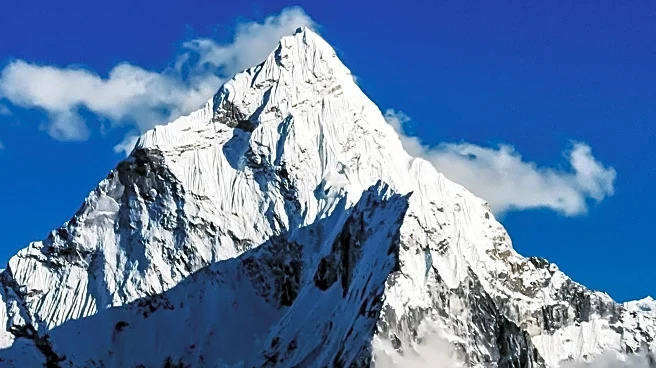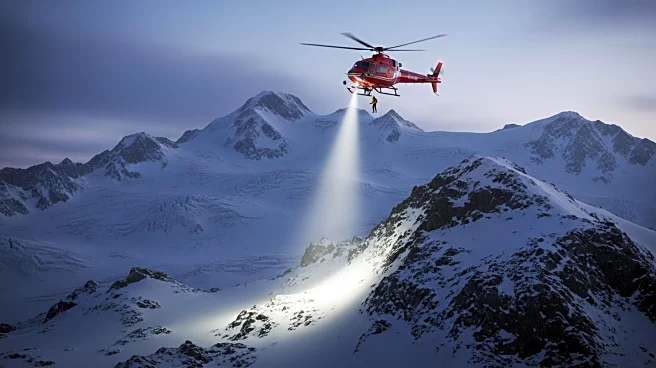What's Happening?
A severe snowstorm trapped hundreds of trekkers near the eastern face of Mount Everest in Tibet during China's National Day holiday. The storm, which began on Friday evening, led to heavy snowfall and rain, causing significant challenges for those in the remote valley of Karma. As of Sunday, rescue teams had successfully guided 350 trekkers to safety in the township of Qudang, while contact was established with over 200 additional trekkers. Local villagers and rescue teams were deployed to clear snow and facilitate access to the area. The situation was exacerbated by the suspension of ticket sales and entry to the Everest Scenic Area, as reported by China Central Television (CCTV).
Why It's Important?
The rescue operation highlights the risks associated with trekking in high-altitude regions, especially during adverse weather conditions. The incident underscores the importance of preparedness and effective emergency response in such remote areas. The successful evacuation of trekkers demonstrates the capability and coordination of local rescue teams and government agencies in handling natural disasters. This event may prompt a review of safety protocols and emergency preparedness for trekking activities in the Himalayas, potentially influencing tourism policies and practices in the region.
What's Next?
Rescue operations are expected to continue as the remaining trekkers are guided to safety in stages. The local government and rescue teams will likely assess the situation to ensure all trekkers are accounted for and safe. There may be increased scrutiny on the safety measures and infrastructure in place for trekking activities in the region. Additionally, the incident could lead to discussions on improving weather forecasting and communication systems to better prepare for similar events in the future.
Beyond the Headlines
The snowstorm and subsequent rescue efforts may have broader implications for the tourism industry in Tibet and surrounding areas. The incident could affect the perception of safety among potential visitors, impacting tourism revenue. It also raises questions about the environmental impact of increased tourism in sensitive regions like the Himalayas, where weather patterns can be unpredictable and dangerous.

